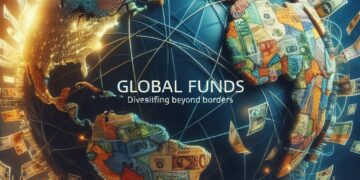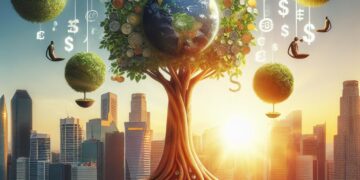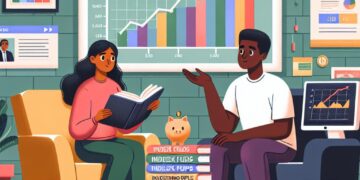In recent years, the art world has been undergoing a major transformation with the emergence of Non-Fungible Tokens (NFTs). These digital tokens have been creating a buzz within the industry, with many artists and art collectors alike embracing the technology. As we look ahead to 2023, it’s worth considering what we can expect from NFTs and their impact on the art world.
NFTs are digital assets that are unique and cannot be replicated. These tokens are built on blockchain technology, which provides a secure and transparent way of tracking ownership and authenticity. NFTs are increasingly being used in the art world, with artists and collectors selling and buying art through the technology.
One of the biggest benefits of NFTs is that they allow artists to monetize their digital works. Previously, digital art was often shared and viewed online for free, making it difficult for artists to make a living from their creations. However, with the introduction of NFTs, artists can now sell their digital art as unique, one-of-a-kind pieces. This has opened up new revenue streams for artists and is likely to continue to do so in 2023.
Another significant impact of NFTs on the art world is the way in which they are changing the way we view and value art. The traditional art market is based on the physicality of an artwork, with its value often determined by factors such as its age, rarity, and condition. However, NFTs are changing this by allowing the value of an artwork to be determined by its digital uniqueness, rather than its physical attributes.
In the past, the value of digital art was often difficult to determine, as it was easy to copy and distribute online. However, NFTs provide a way for digital art to be authenticated and valued, making it easier for collectors to invest in this type of art. This is expected to continue to drive demand for NFTs in 2023 and beyond.
One area where NFTs are likely to have a significant impact in the coming years is in the world of gaming. Gaming is already a huge industry, with millions of players around the world spending billions of dollars on in-game items and collectibles. With the introduction of NFTs, gaming companies can now create unique, one-of-a-kind items and sell them as digital assets to players.
This is likely to lead to a new era of gaming, where players can own and trade unique items that have real-world value. It also has the potential to create new revenue streams for gaming companies, as they can now sell digital assets directly to players. This is an area to watch closely in 2023, as it’s likely to become an increasingly important part of the art world.
Another way in which NFTs are changing the art world is by creating new opportunities for collaboration and creativity. With the ability to easily share and sell digital art, artists from around the world can now collaborate on projects in ways that were previously impossible. This is expected to lead to a new era of creativity, with artists exploring new forms of art and pushing the boundaries of what is possible.
At the same time, NFTs are also creating new challenges for artists and collectors. One of the biggest challenges is the environmental impact of blockchain technology, which requires significant amounts of energy to operate. This is a concern for many within the art world, who are already grappling with issues of sustainability and ethical responsibility.
Another challenge is the potential for fraud and theft. As with any new technology, there are always risks, and the art world is no exception. There have already been instances of NFTs being stolen or sold without the consent of the artist, and this is likely to continue to be a concern in 2023 and beyond.
way we think about and value art in ways that were previously unimaginable. While there are certainly challenges to be faced, there is no doubt that NFTs are opening up new avenues for creativity and revenue generation within the art world. As we look ahead to 2023, it’s worth considering some of the potential implications of this emerging technology on the art world.

One of the most significant implications of NFTs on the art world is the way in which they are changing the dynamics of ownership. Traditionally, art ownership has been restricted to a relatively small group of collectors and institutions, with access to these works often limited to those who can afford to visit museums and galleries. However, NFTs are changing this by allowing artists to sell their work directly to collectors and fans, thereby bypassing the traditional gatekeepers of the art world.
This has the potential to democratize the art world in ways that were previously impossible. By opening up access to a wider range of artists and collectors, NFTs could help to foster a more diverse and inclusive art community. This is likely to be particularly significant in the context of emerging and underrepresented artists, who have historically struggled to gain recognition in the traditional art market.
Another potential impact of NFTs on the art world is the way in which they are changing the way we think about authenticity and ownership. With NFTs, the ownership and authenticity of a work of art are determined by the blockchain, rather than by physical or institutional markers of ownership. This means that the provenance of a work of art is transparent and verifiable, regardless of where it is stored or how it is accessed.
This has the potential to transform the art market, making it easier for collectors to buy and sell works of art with confidence. It also has the potential to reduce the risk of fraud and theft, as the ownership of a work of art can be tracked and verified in real-time. This is likely to be particularly significant for high-value works of art, where the provenance and authenticity of the work can have a significant impact on its value.
In addition to these more practical implications, NFTs are also changing the way we think about art and its value. With NFTs, the value of a work of art is no longer determined solely by its physical attributes, such as its age, rarity, and condition. Instead, the value of a work of art is determined by its digital uniqueness and the demand for that particular piece.
This has the potential to create a new market for digital art, which has traditionally been undervalued or ignored by the traditional art market. It also has the potential to challenge the very notion of what art is and what it means to own a work of art. As NFTs continue to gain acceptance and traction within the art world, it’s likely that we will see a growing demand for digital art and a re-evaluation of the way we think about and value art.
While the potential benefits of NFTs for the art world are significant, there are also a number of challenges that must be addressed. One of the most pressing concerns is the environmental impact of blockchain technology. The energy consumption required to mine and maintain the blockchain is significant, and this has led to concerns about the sustainability of NFTs and their impact on the environment.

There is also the risk of fraud and theft, as NFTs are still a relatively new and untested technology. There have already been instances of NFTs being stolen or sold without the consent of the artist, and this is likely to continue to be a concern as the technology becomes more widely adopted.
Another challenge is the potential for NFTs to further entrench existing power dynamics within the art world. While NFTs have the potential to democratize the art world by opening
conclusion
NFTs are changing the way we think about and value art in ways that were previously unimaginable. While there are certainly challenges to be faced, there is no doubt that NFTs are opening up new avenues for creativity and revenue generation within the art world. As we look ahead to 2023, it’s worth considering some of the potential implications of this emerging technology on the art world.














